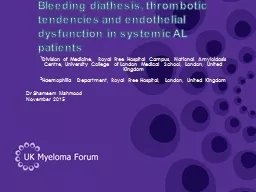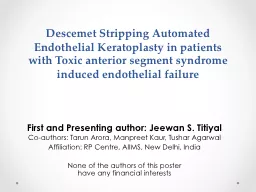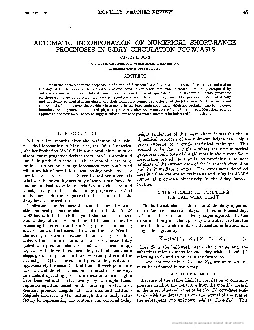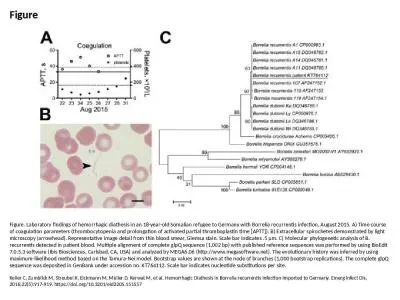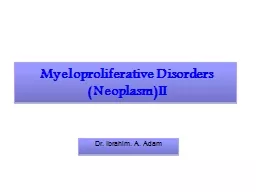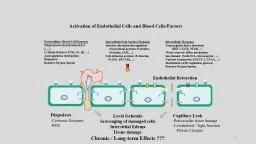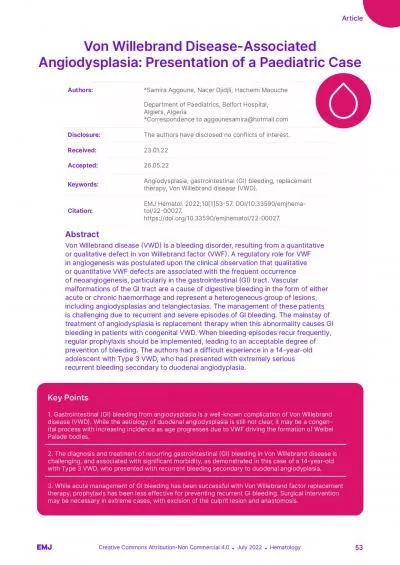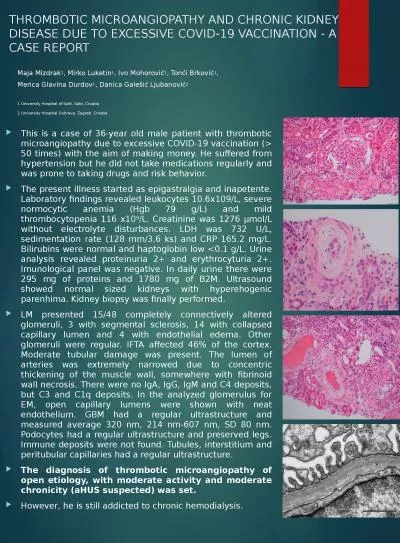PPT-Bleeding diathesis, thrombotic tendencies and endothelial dysfunction in systemic AL patients
Author : samantha | Published Date : 2022-06-11
Dr Shameem Mahmood November 2015 1 Division of Medicine Royal Free Hospital Campus National Amyloidosis Centre University College of London Medical School London
Presentation Embed Code
Download Presentation
Download Presentation The PPT/PDF document "Bleeding diathesis, thrombotic tendencie..." is the property of its rightful owner. Permission is granted to download and print the materials on this website for personal, non-commercial use only, and to display it on your personal computer provided you do not modify the materials and that you retain all copyright notices contained in the materials. By downloading content from our website, you accept the terms of this agreement.
Bleeding diathesis, thrombotic tendencies and endothelial dysfunction in systemic AL patients: Transcript
Download Rules Of Document
"Bleeding diathesis, thrombotic tendencies and endothelial dysfunction in systemic AL patients"The content belongs to its owner. You may download and print it for personal use, without modification, and keep all copyright notices. By downloading, you agree to these terms.
Related Documents

